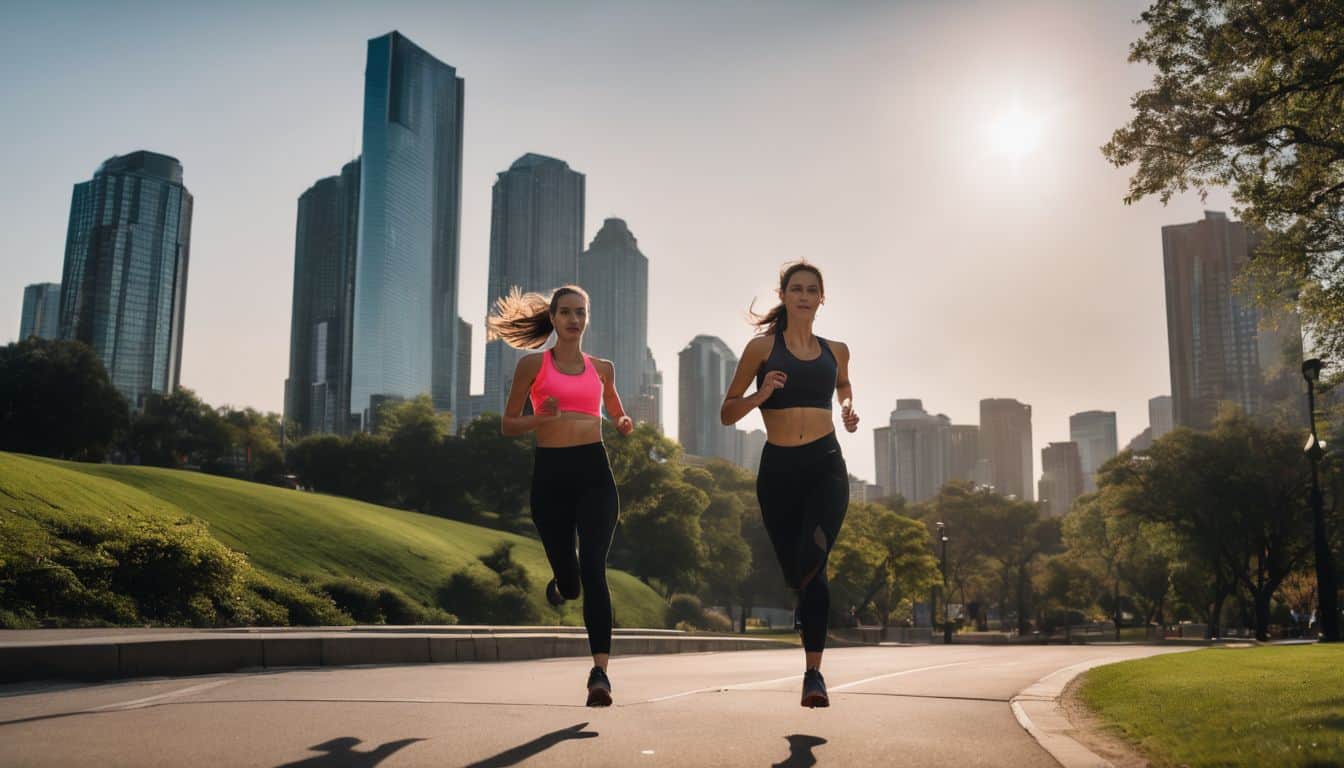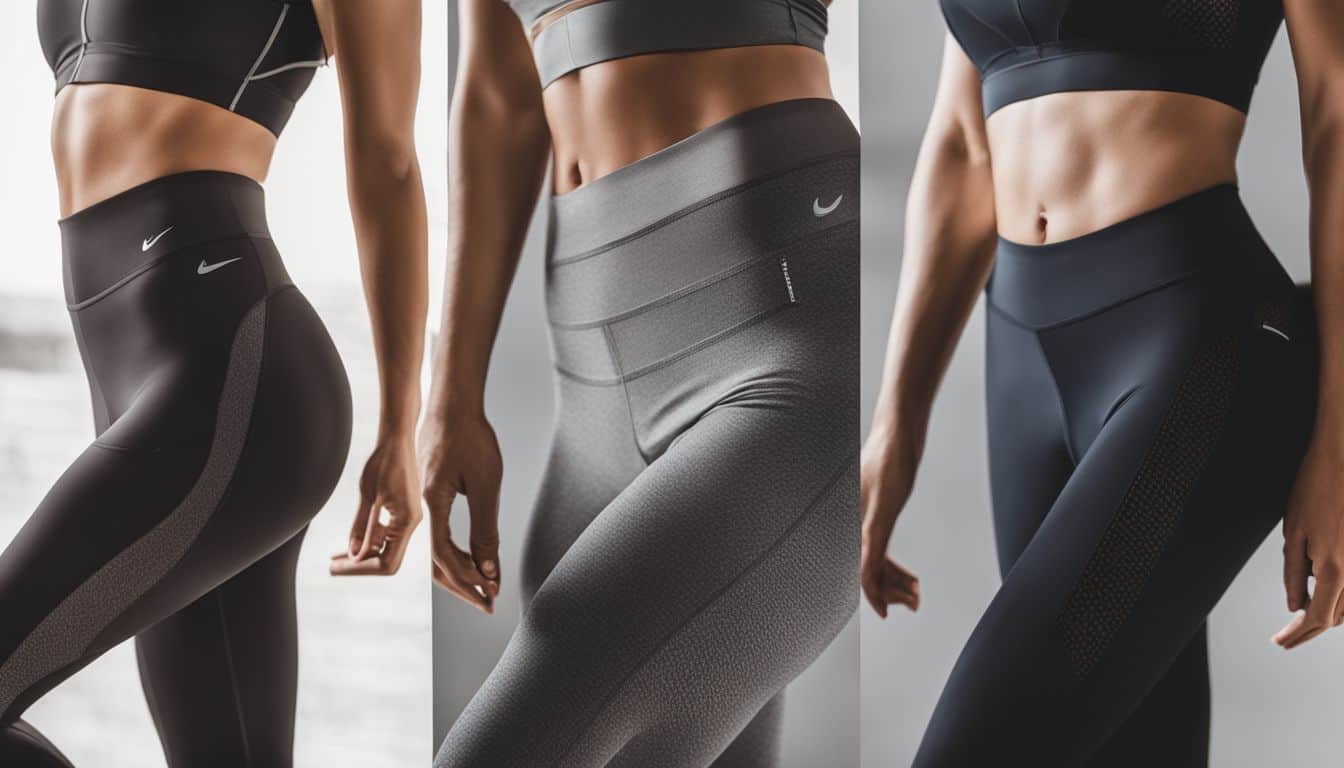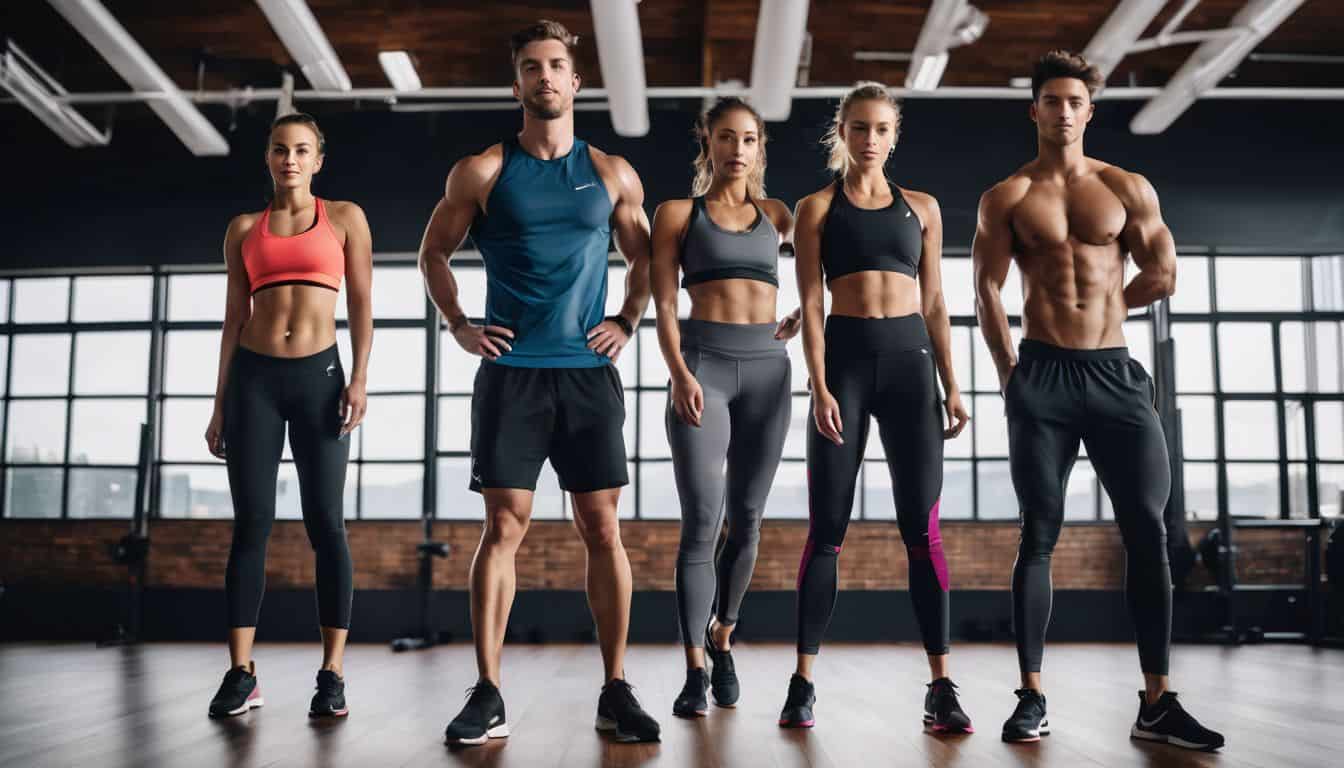If you’re anything like me, shopping for workout gear can sometimes feel like learning a foreign language. What’s the difference between running tights and training tights anyway? Isn’t all fitness apparel created equal? Spoiler alert: not quite! After doing my homework and comparing many pairs of each type, I found out that there are subtle but significant differences that really do make an impact.
So come along with me as we decode these variations – it’ll transform your shopping experience and guarantee you snag the perfect gear for your exercise routine.
Key Takeaways
- Running tights are designed for running and provide benefits like muscle support, flexibility, and warmth, while training tights offer comfort and flexibility during various training activities.
- Running tights have higher compression levels, while training tights focus on breathability.
- Running tights are similar to leggings and do not cover the feet, while training tights usually extend down to the ankles.
- Running tights have a sleek design with minimal seams for reduced friction, while training tights may have decorative designs or mesh panels for enhanced breathability.
What are Running Tights?

Running tights are form-fitting athletic pants designed specifically for running, offering a range of benefits such as improved muscle support and increased aerodynamics.
Purpose and design
Running tights are built for a smooth and fast run. They fit close to the skin, much like leggings. Still, they let you move with ease. The goal of running tights is to help your body in many ways when you run.
They give aid, press on parts where it’s needed, and keep you warm too. These tights can boost blood flow and lessen tireness in muscles during a run. You can find running tights in many styles using different materials that feel good for any type of weather.
Benefits for runners
Runners will find a lot of good in using running tights. Here’s why:
- Running tights boost your flexibility. They let you move any way you want to.
- These tights can lower muscle shakes when you run.
- They keep your legs warm in cold weather.
- Running tights also cut down wind push. That makes you faster!
- A study from 1986 says running tights may make you a better runner.
- Want comfort, warmth, and tight muscles? Use running tights! They help your workout do more for you.
Fabric and construction
Running tights are made of light, thin materials. They feel like a second skin on your body. Their design is to help you move fast and easy. The Oiselle Pocket Jogger Tights for running fit this bill well.
These tights are not thick like leggings or other gym clothes. They allow air to pass through because they’re somewhat see-through. That’s why you might need to wear an extra layer over them sometimes.
This makes them perfect for sprinting tasks and long runs as they don’t hold in heat.
What are Training Tights?
Training tights, on the other hand, are designed to provide comfort and flexibility during various training activities such as weightlifting, CrossFit, or HIIT workouts.
Purpose and design
Running tights and training tights are designed for specific purposes and have different designs. Running tights, also known as athletic leggings or performance tights, are made to be snug-fitting and contour to your body.
They provide support and freedom of movement for runners. On the other hand, training tights, also called workout tights or exercise leggings, are designed to fit extremely tight like a second skin.
They are meant for various types of training activities, such as gym workouts or fitness classes. Both types of tights are typically made from comfortable fabrics that allow you to move easily while providing some level of compression.
Benefits for training activities
Training tights offer several benefits during your workout sessions:
- Improved Muscle Support: The compression feature of training tights helps to support and stabilize your muscles, reducing muscle vibrations and fatigue.
- Enhanced Performance: The snug fit and stretchy fabric of training tights allow for a wide range of motion, enabling you to move freely without any restrictions. This can improve your overall performance during different exercises or activities.
- Moisture-Wicking Properties: Many training tights are made with moisture-wicking materials that help to keep you dry by pulling sweat away from your body. This can prevent discomfort and chafing during intense workouts.
- Temperature Regulation: Training tights are designed to provide insulation when it’s cold outside and ventilation when it’s hot. They help to regulate your body temperature, keeping you comfortable throughout your training session.
- Protection Against the Elements: Some training tights have added features like reflective elements or water-resistant coatings, making them suitable for outdoor workouts in low-light conditions or inclement weather.
Fabric and construction
The fabric and construction of running tights and training tights play a crucial role in their performance. Running tights are usually made from lightweight materials such as nylon or spandex, which provide stretchiness and breathability.
These fabrics help to wick away sweat and keep you cool during your run. The construction of running tights often includes flatlock seams that prevent chafing and irritation. On the other hand, training tights are typically made from thicker materials like polyester or a blend of fabrics for added durability.
They may also have reinforced stitching for enhanced support during intense workouts. Both types of tights are designed to be form-fitting, offering flexibility and freedom of movement while providing a comfortable fit throughout your activities.
Key Differences Between Running Tights and Training Tights
Running tights are designed with higher compression levels and provide more coverage, making them ideal for long-distance running. On the other hand, training tights offer more flexibility and breathability, perfect for a variety of exercises.
Read on to discover which tights are right for you!
Compression level
Compression level is an important difference between running tights and training tights. Compression tights have specially designed fabric that provides a tight fit to support your muscles during exercise.
They apply pressure to improve blood flow, reduce muscle vibration, and speed up recovery. On the other hand, training tights may not have the same level of compression and are often made with more breathable fabrics for comfort during different types of workouts.
So, if you’re looking for extra support and faster recovery, compression tights might be the better choice for you.
Length and coverage
Both running tights and training tights come in different lengths and offer coverage for your legs. They can be full-length, covering the entire leg, or they may be shorter, like capri or ¾ length.
However, there is a slight difference in the coverage between these two types of tights. Running tights are similar to leggings as they do not cover the feet, while training tights usually extend down to the ankles.
So if you prefer having your feet uncovered during your run, running tights would be the better choice for you.
Design features
The design features of running tights and training tights are slightly different. Running tights usually have a sleek and aerodynamic design, with minimal seams to reduce friction while running.
They often have reflective elements for visibility during low-light conditions, such as early morning or evening runs. On the other hand, training tights may have more decorative designs and patterns since they are used for various types of exercises.
They can also feature mesh panels or strategic ventilation to enhance breathability during intense workouts. Both types of tights prioritize comfort and flexibility, allowing you to move freely without any restrictions.
Detailed Comparison: Running Tights Vs Training Tights

When it comes to choosing the right gear for your workout, it’s important to know the differences between running tights and training tights. In this section, we’ll dive into a detailed comparison of these two types of athletic wear, focusing on their design, materials, and benefits.
| Features | Running Tights | Training Tights |
|---|---|---|
| Design | Running tights are designed to provide a snug fit. They are often more translucent than leggings and require an additional layer such as shorts. | Training tights, while also designed for a snug fit, are typically thicker, offering more coverage without the need for an additional layer. |
| Fabric | Running tights are made from lightweight materials, allowing for freedom of movement and are slightly see-through. | Training tights are typically made from thicker materials, offering more opacity. |
| Weight | Running tights are typically lighter, making them ideal for high-intensity activities where weight can make a difference. | Training tights are usually heavier due to their thicker material, but this also allows them to provide more support during workouts. |
| Benefits | Running tights are perfect for providing warmth during a chilly morning run. They also offer a tight, snug fit, which can support muscle recovery. | Training tights are ideal for providing more coverage during a workout session. They offer a balance between comfort and support, which is crucial during intense workout sessions. |
| Usage | Running tights can serve as leg cover under other garments, making them versatile for cold-weather workouts. | Training tights work well for a wide range of exercises, not just running. Hence, they are a versatile addition to any fitness wardrobe. |
Choosing the Right Tights for Your Activity
When selecting the perfect tights for your activity, consider factors such as the type of exercise, climate and weather conditions, and personal preference for comfort.
Consider the type of exercise
When choosing the right tights for your activity, it’s important to consider the type of exercise you’ll be doing. Different activities require different levels of flexibility, support, and coverage.
For example, if you’re going for a run, you’ll want running tights that are designed to reduce drag and allow for freer movement. These tights are snug and form-fitting to ensure they don’t distract you during your run.
On the other hand, if you’re doing yoga or pilates, you might prefer leggings that offer more flexibility and a looser fit. It all depends on what kind of workout you’ll be doing, so make sure to choose your tights accordingly.
Climate and weather conditions
When considering climate and weather conditions, it’s important to choose the right tights for your activity. In cold weather activities, running tights can keep your muscles warm and provide an extra layer of protection against the elements.
Some running tights even use insulated materials to help combat colder temperatures. On the other hand, if you’re exercising in hot and humid climates, running tights offer more breathability compared to thicker training tights.
So, depending on the climate and weather conditions you’ll be facing during your workouts or runs, make sure to choose tights that will keep you comfortable and perform well in those specific conditions.
Personal preference and comfort
When choosing between running tights and training tights, it all comes down to what feels best for you. It’s important to find tights that fit well and allow you to move freely without any restrictions.
Consider your personal preferences and what makes you feel comfortable during your workouts. Everyone is different, so the best choice will vary depending on your body type, specific needs, and the activities you plan on doing.
So go ahead and try out different styles of tights until you find the perfect pair that suits your personal preference and keeps you comfortable throughout your runs or training sessions.
Conclusion on What Is The Difference Between Running Tights And Training Tights
In conclusion, the main difference between running tights and training tights lies in their purpose and design. Running tights are designed specifically for running, providing warmth, coverage, and ease of movement.
They may also have reflective features for safety. On the other hand, training tights are more versatile and suitable for various activities at the gym or during workouts. When choosing between the two, consider your activity, weather conditions, and personal preference to find the right fit for you.
FAQs on What Is The Difference Between Running Tights And Training Tights
1. What are running tights?
Running tights are tight-fitting pants made specifically for running, providing support and compression to the muscles.
2. What are training tights?
Training tights are versatile workout pants designed for various activities like weightlifting or yoga, offering flexibility and unrestricted movement.
3. How do running tights differ from training tights?
Running tights have additional features like moisture-wicking fabric and reflective details for visibility in low light, while training tights focus more on comfort and flexibility.
4. Can I use running tights for other workouts?
Yes, you can use running tights for other workouts as they provide compression and support to the muscles, but may lack specific features required by certain activities.
5. Can I wear training tights for running?
Yes, you can wear training tights for running if they offer adequate support and comfort during your runs, but consider choosing ones with moisture-wicking fabric to keep you dry throughout the run.





Leave a Reply